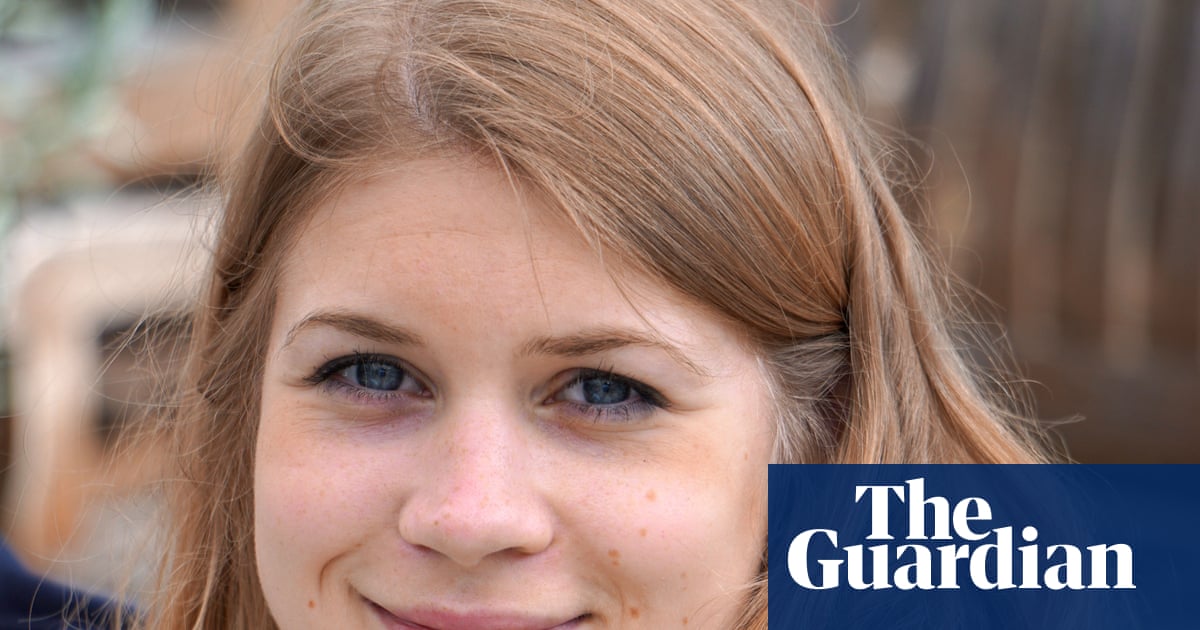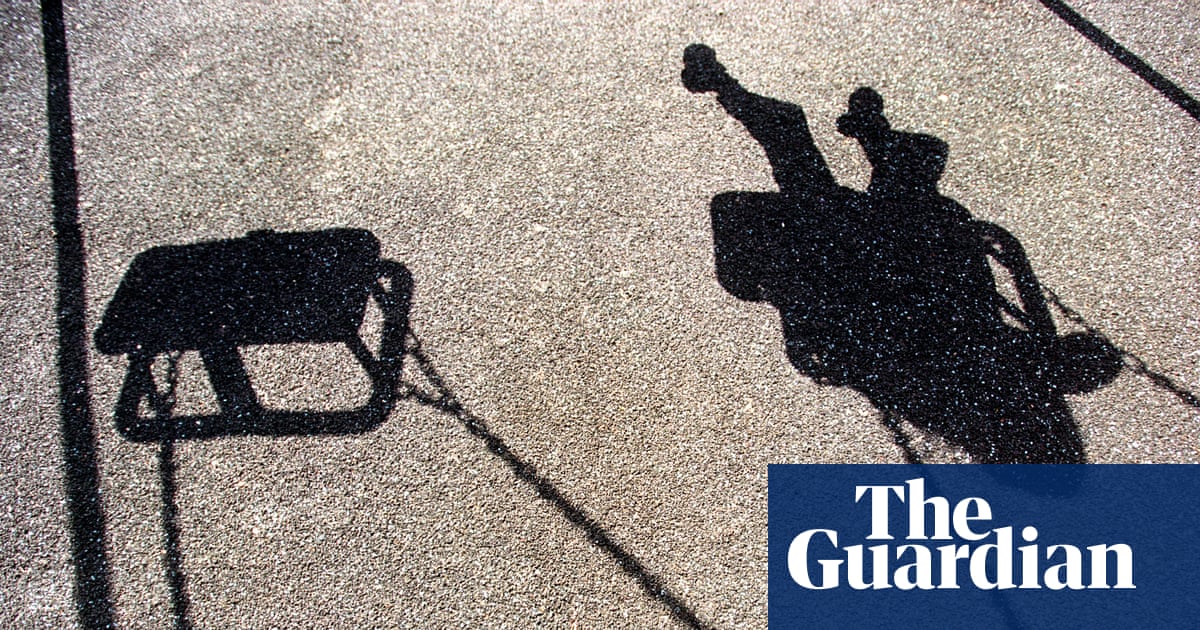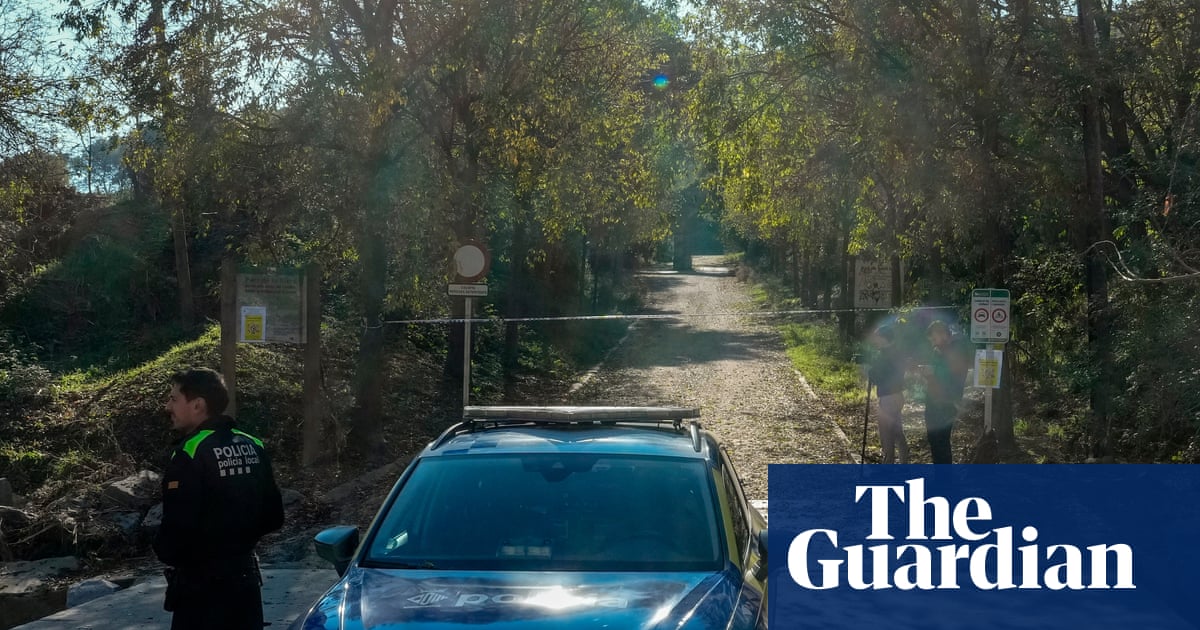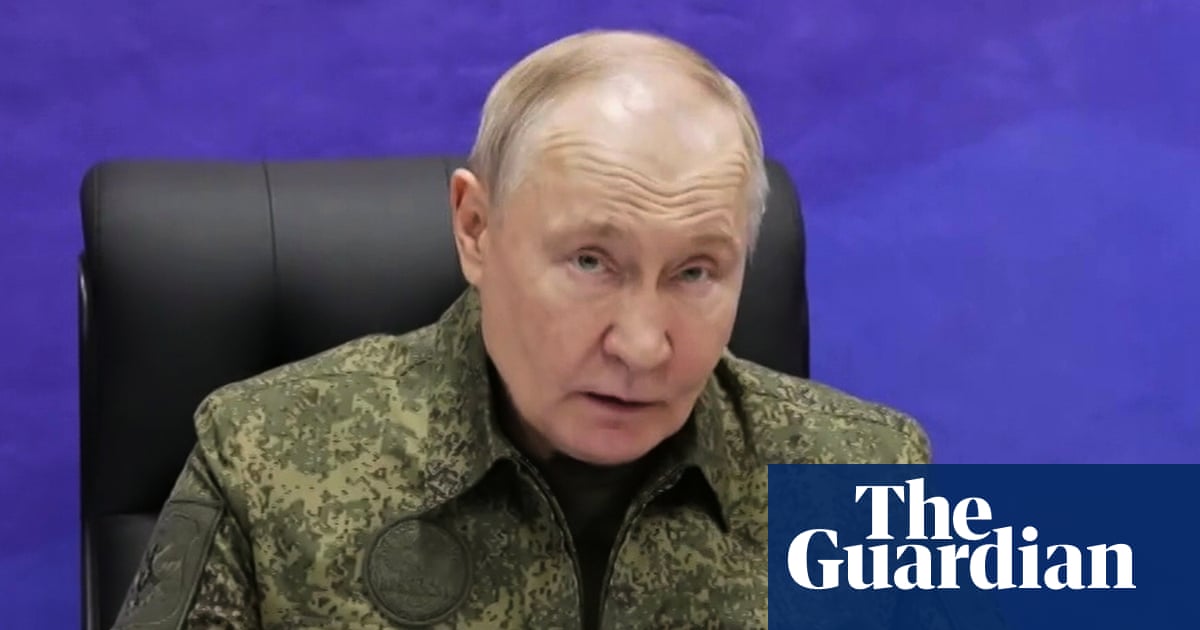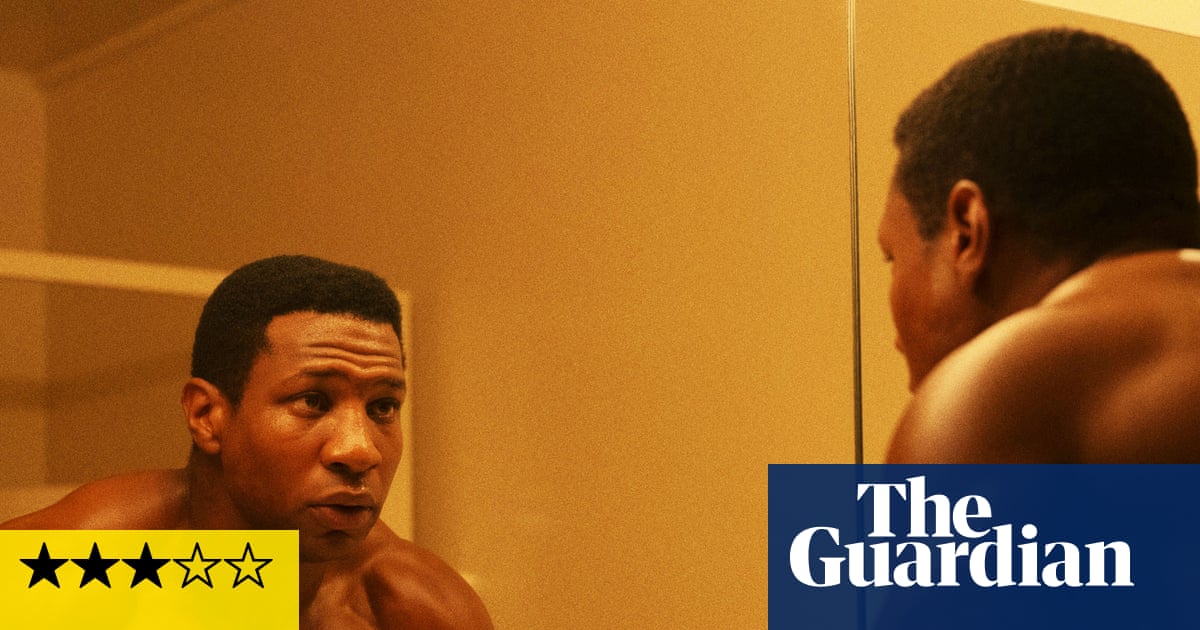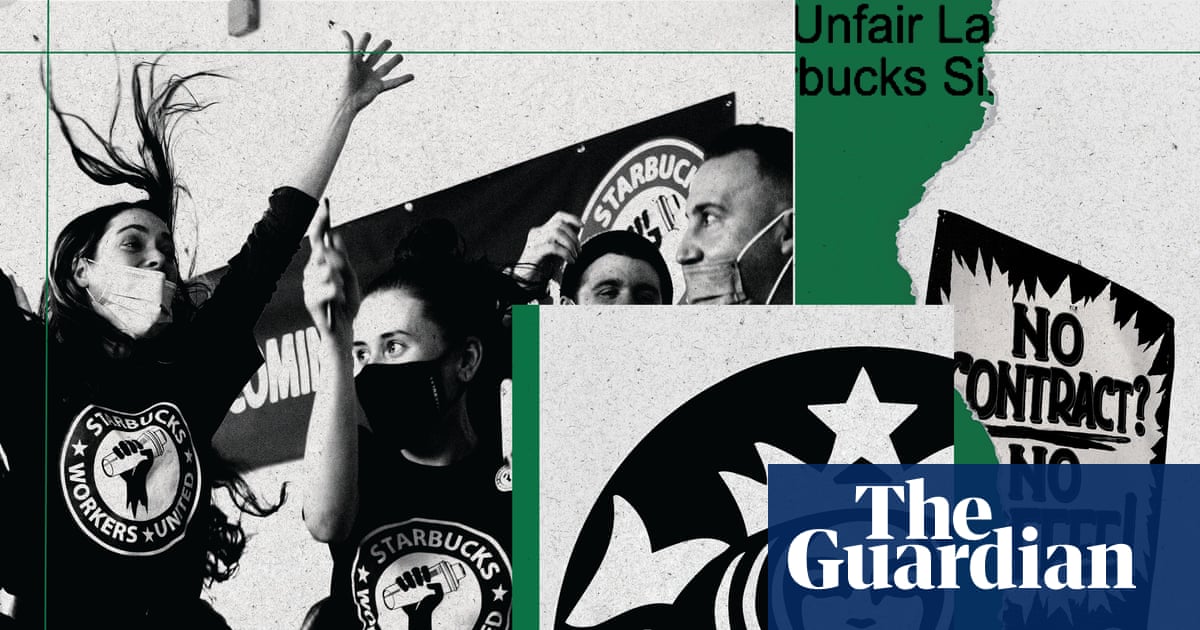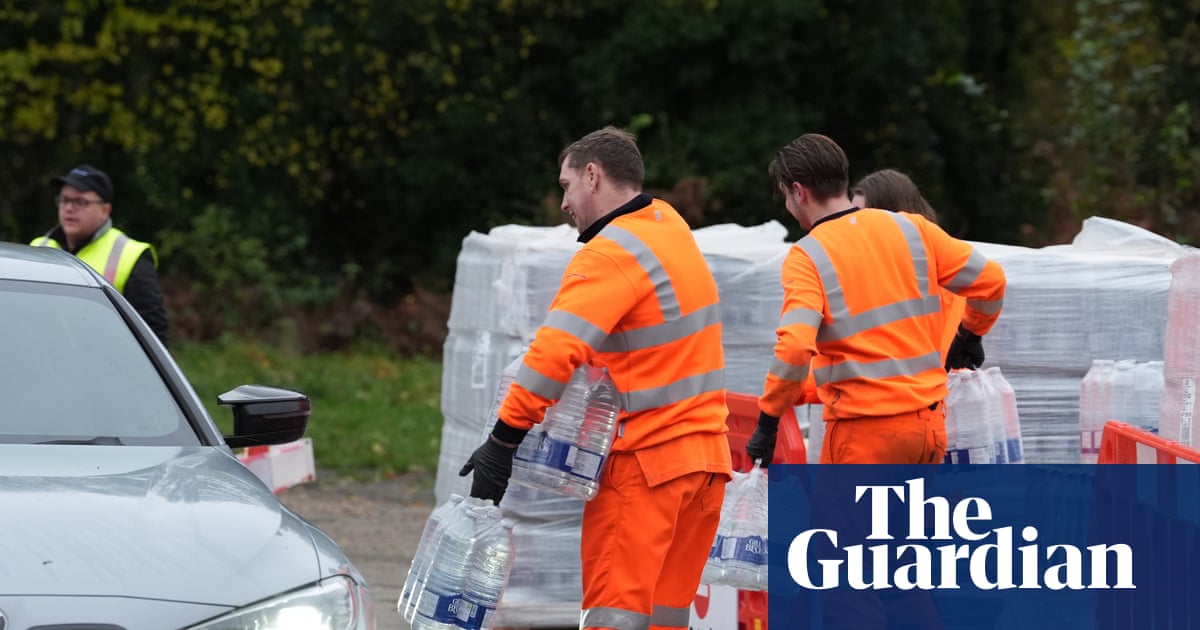“I often have the same dream: that I’m trying to get home,” says Elena Lebedeva, setting out tea and sandwiches in the tiny kitchen of her rented flat. “There’s always some checkpoint, obstacle, something in the way. I keep going – walking, running, crawling – but I never manage to reach it.”
Home for Lebedeva is Opytne, a tiny village – one school, no supermarkets – just outside Donetsk.
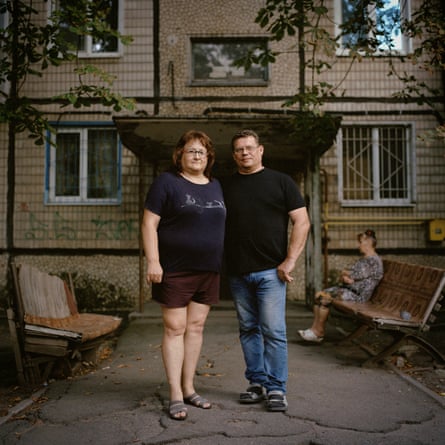
-
Elena Lebedeva with her husband, Rodion, outside their new apartment block in Kryvyi Rih, 2023
Sitting at the table of the flat that her family fled to, she reels through the fates she knows of the roughly 30 people who remained in Opytne as Russian troops advanced. Lebedeva’s neighbour, known as Uncle Sasha, died in his basement, where he’d been living since his house was destroyed. Perhaps he fell from the ladder or suffered a heart attack. By the time his body was found, rats had eaten his hands.
Three people had been sitting on a bench outside their apartment building when a mortar shell struck them directly. Neighbours gathered what was left of their bodies, but constant bombing meant they could not stay outside long enough to dig their graves. They wrapped the remains in plastic bags, along with their passports, and placed them in a shed. Later, the shed also took a direct hit. Nothing was left.
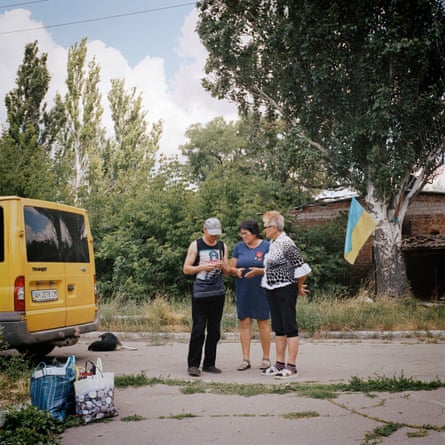
-
Elena Lebedeva drops neighbours home to Opytne after a shopping trip to Avdiivka
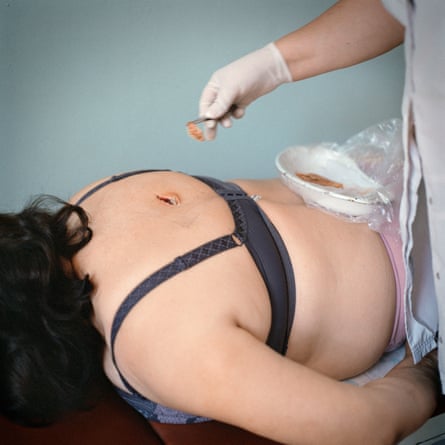
-
Elena Lebedeva has her shrapnel wounds dressed at a hospital in Pokrovsk after being injured by shelling while gardening at her home in Opytne, 2022
Lebedeva herself was injured in the summer of 2022, when an artillery shell landed in her back yard and shrapnel pierced her back and buttocks. That might have saved her life – after being hospitalised, she was unable to return home and, with her husband, Rodion, relocated west to the city of Kryvyi Rih. Until then, they had stubbornly remained in Opytne.
The village had been stranded between frontlines and cut off from the outside world since 2014. For eight years, residents had lived without electricity, water, gas, heat, groceries, or access to health care and other essential services. The only way in or out was by a mud road through a minefield. Together, Elena and Rodion kept the village alive throughout that time, bringing in supplies in their bright yellow minivan and caring for elderly neighbours who had nowhere to go.
Across Donbas, countless families made similar choices to carry on with ordinary routines in impossible circumstances. To outsiders, the decision to stay in a war zone, to keep going about daily life even as bombs fall and everything collapses, can be hard to grasp. But for many people living through war, it makes sense. In fact, it’s a typical response. Even amid waves of violence, life often continues.
The violence of war is measured in distance. Sometimes, it’s a matter of millimetres, the distance by which shrapnel missed Lebedeva’s spinal cord. Sometimes, it’s a matter of kilometres, how far from the shifting frontline your home is. Sometimes, it’s the space between minds: the emotional distance between those who experience the violence and those who cannot imagine it ever happening to them. For the past seven years, we documented the stories of those living in communities in Donbas for a project called Five Kilometres From the Frontline. They show us what it truly means to live with war: not just survive its explosions, but endure its routines.
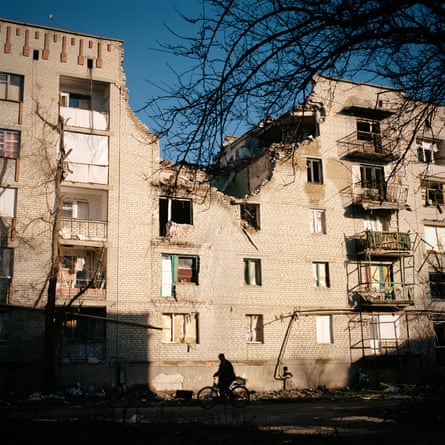
-
A heavily damaged apartment building in Lyman remains occupied, 2022
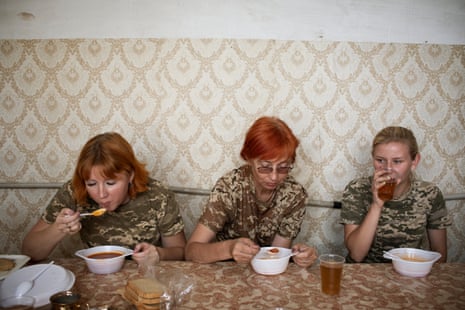
-
Ukrainian soldiers eat lunch at a base near Pisky, 2018
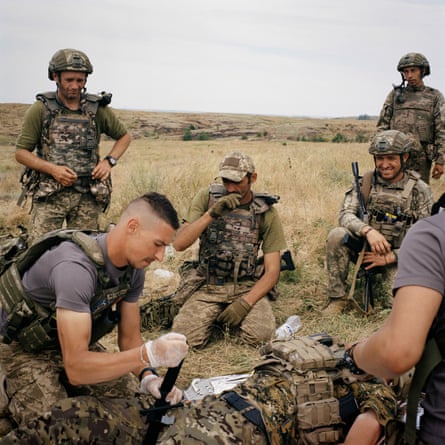
-
New recruits from the 80th Airborne Brigade during medical training drills in the Bakhmut area, a few days before deployment to the frontline, 2023
War comes as a paralysing shock only at the beginning. Over time, a new reality emerges. As long as you stay alive, you must eat, sleep, brush your teeth and care for your loved ones. Bedsheets still need changing, the rubbish is carried out, potatoes are peeled, dishes washed and stacked to dry. If you still have your job, you continue working.
When the full-scale invasion began, Oleksander Dokalenko worked for the municipal water company in Avdiivka. He kept reporting for duty even as shelling forced him into a basement. His short walk to work became a daily gauntlet: “I lived only 500 metres away, but it took me forever to get there. You start walking, then hear a whistle and run for cover into the nearest building. You wait for the explosion – if it goes off elsewhere, you keep walking, but only until the next whistle.”
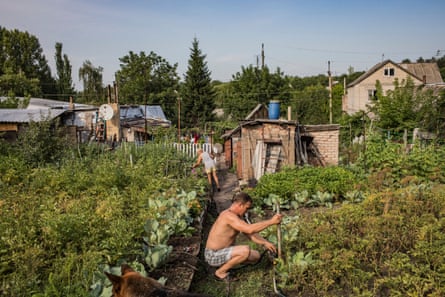
-
Oleksander Dokalenko and his wife, Elena Dyachkova, before they were displaced, Avdiivka, 2018
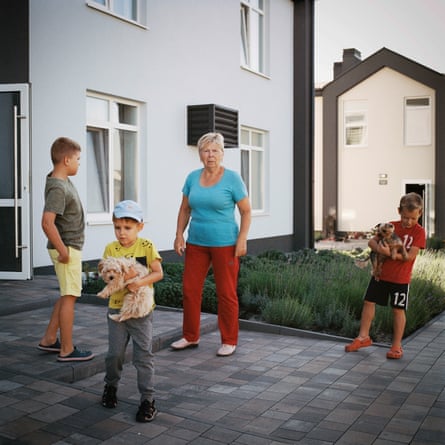
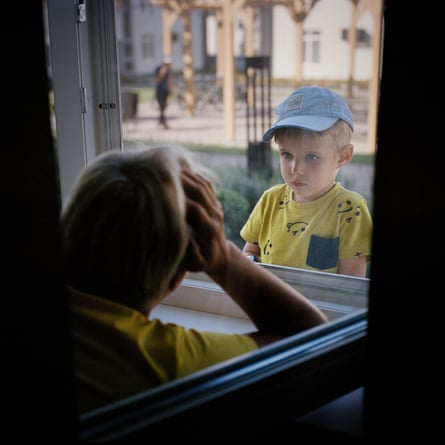
-
Elena Dyachkova and her grandson Nikita in the family’s new apartment at a semi-permanent housing facility for people displaced by the war in Kyiv, 2024
Most people think they know what war is. We’ve seen it thousands of times in movies and news coverage: tanks, soldiers, explosions, crying women, pitiable refugees. These images are so familiar they’ve become trite. But most of the time, war does not look like this. Most of the time, it seems too normal, too much like peace to catch the eye of journalists and film-makers. Often, only a tiny detail – tape in the shape of a cross on a window, or an unusual emptiness in the street – reveals that something is off. Yet, this seeming normality of the abnormal, this integration of horror and the mundane, is what tells the truest story of war.

-
Parishioners take part in a procession at the Church of St Mary Magdalene in Avdiivka, 2018
Across Donbas communities, many people who could no longer live in their destroyed houses near the frontlines still returned whenever they could. They tidied up what remained of their homes and tended their gardens, even when it made little practical sense. “I think we should have abandoned this house long ago, but I don’t prevent my husband from visiting it,” one woman tells us. “I feel like it would deprive him of the last hope he has of returning to our normal life.”
For a long time, it was this surreal state – snatches of ordinary life inside a looming disaster – that endured in many villages skirting the frontlines. But since 2022, the escalating brutality of the war has pushed local communities past breaking point. Many of those who clung on for years are now scattered across the country.
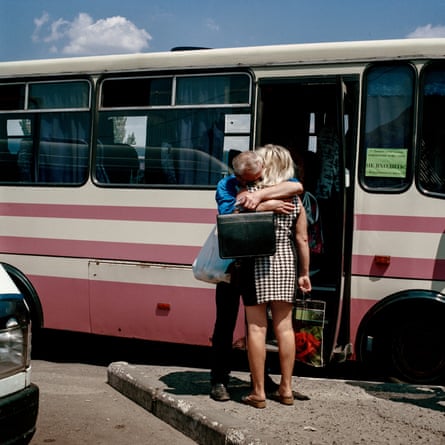
-
A man says goodbye to his partner before taking a bus from the frontline town of Kurakhove into occupied territory in Donetsk, 2019
In the small village of Polohy in central Ukraine, Olha Grinik struggles to care for her two children in a rundown, abandoned cabin without running water or electricity – the only housing her family could afford after they were displaced from Avdiivka and her husband, Mykola, was drafted into the armed forces. Before the war, Avdiivka was a working-class town of 25,000 people, anchored by its vast metal plant.
After 2014, it became a frontline town, and the Griniks raised their two small children in a home just 50 metres from the trenches. Mykola worked shifts at the plant and Olha kept the household together. Before the full-scale invasion, when life was precarious but still had a rhythm, Olha was a laid-back young woman. Today, she seems transformed, her former ease giving way to anxiety and strain.
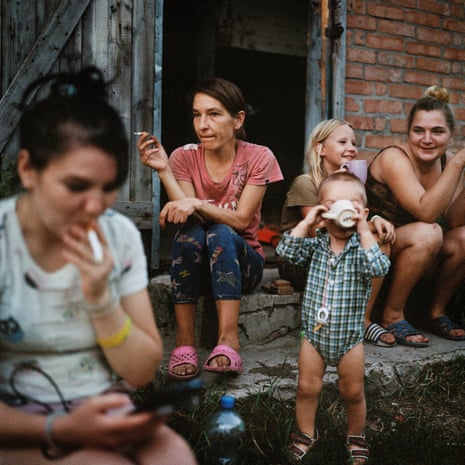
-
Olga Grinik (centre) with extended family at her new home in Poltava after being displaced from Avdiivka, 2024
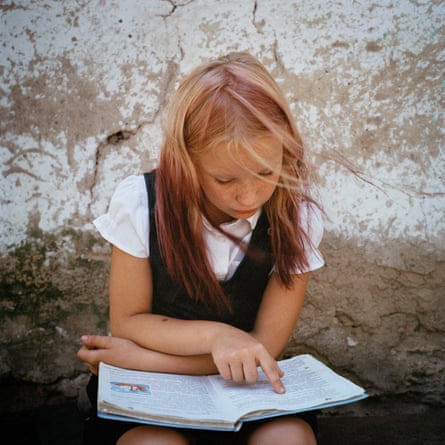
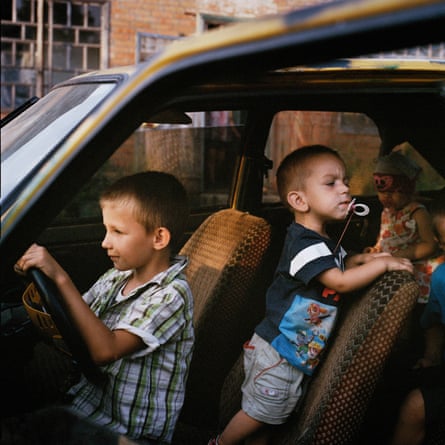
-
Miroslava Grinik reading a schoolbook in the Poltava province, 2024; Kirill Grinik (left) playing with relatives in a broken down car parked in the yard of his new home
She has lost a lot of weight, and seems on the verge of tears when she speaks. “When Mykola comes home, the children are all over him. But it happens so rarely,” she says. “He got 15 days of leave, but they called him back after five days. I was heartbroken. I want to be next to him, hug him, hold his hand, do things together.”
At her house, windows are covered with plastic sheeting instead of glass, and the children are bathed in a bowl, with cold water. Olha bought hunks of firewood for the stove in preparation for winter, but she’s too weak to chop it. In the beginning, male relatives helped with manual tasks, but eventually, they too were drafted or signed military contracts as there are no jobs in the village.
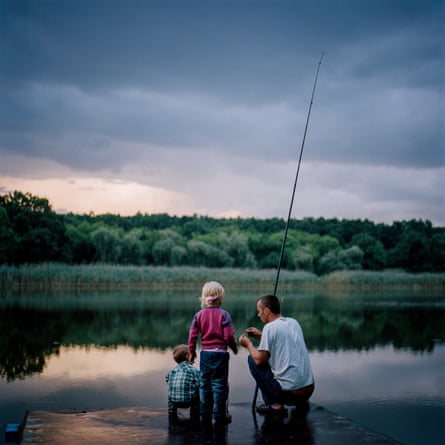
-
Mykola Grinik fishing with his son, Kirill, and daughter, Miroslava, near Avdiivka, 2019
The homes that Lebedeva, Grinik, Dokalenko and all their neighbours left behind have been destroyed in the fighting. The destruction runs so deep that not only have houses been obliterated, the land itself has been torn apart. None of those who once lived there can access the area. Its condition can be imagined from aerial footage: videos show artillery scars that stretch far beyond the built environment, ripping through grasslands and leaving a pockmarked, contaminated terrain.
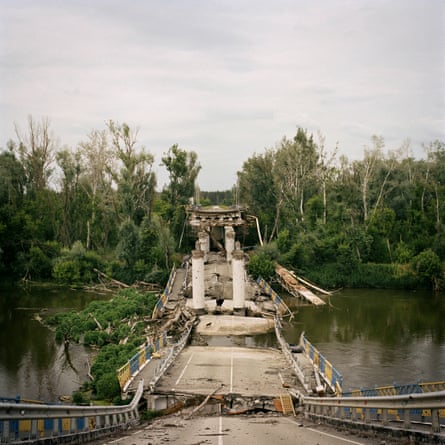
-
A destroyed bridge over the Siverskyi Donets River in Bohorodychne, 2023
For Serhii Lymanskyi, a ranger who has devoted his life to caring for this land, its devastation is an open wound.
“I know every tree, every patch of grass here,” says Lymanskyi about the chalk-steppe nature reserve he cares for. It now lies on the frontline, on the edge of the small part of Donbas still controlled by Ukraine.
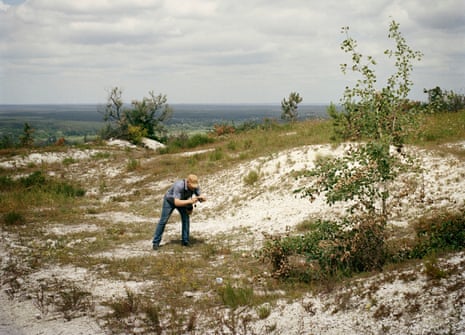
-
Serhii Lymanskyi, director of the chalk-steppe nature reserve near Lyman, Donbas
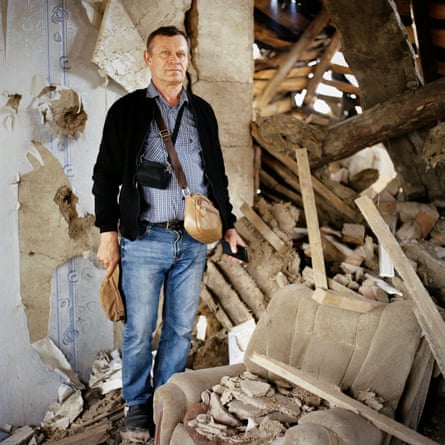


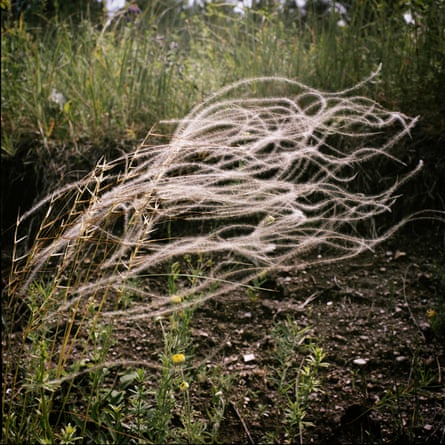
-
Top: Lymanskyi visits his destroyed home, 2023; military debris in the reserve. Bottom: a tree damaged by shelling; Stipa Ucrainica, a grass endemic to the Eurasian steppe
Home to more than 500 rare plant species that grow only in chalk soil, the reserve has been Lymanskyi’s life’s work. His son Yevhen, who grew up helping his father, later became a professional ranger himself. The war upended everything. Yevhen was conscripted and severely wounded; after more than 30 surgeries, it is still uncertain whether he will walk again. A direct strike destroyed the family’s home.
The reserve itself has not been spared. Shell craters and trenches have torn through the chalk slopes, wiping out large swathes of flora. For Lymanskyi, the loss is ecological and deeply personal. “These days, whenever I come to Kreydova Flora, I see it shedding tears – there is a little rain drizzling every time,” he says. “All my labour, all the labour of nature to create this beautiful place – everything is gone.”
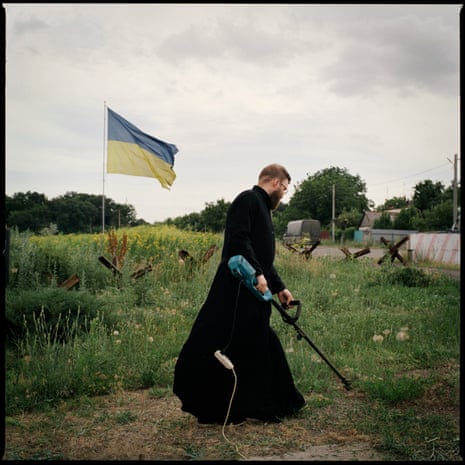
-
Father Rostislav strims the verge outside St Epiphany church in the village of Karlivka, 2022

 2 months ago
76
2 months ago
76


